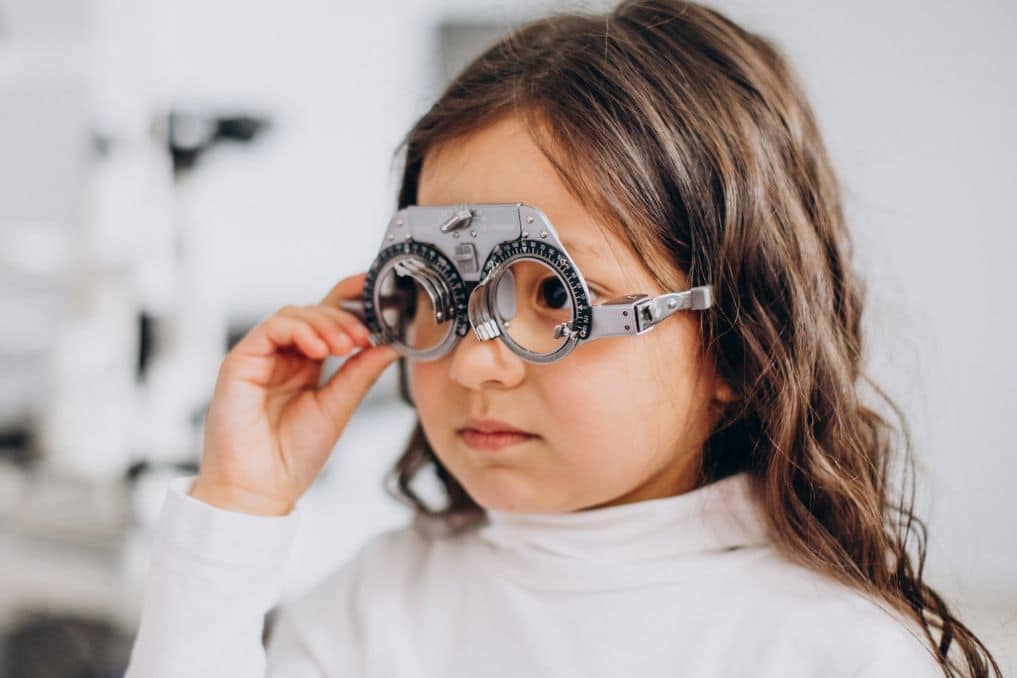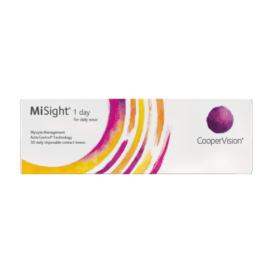
Did you know that 77% of people say that sight is their most important sense, yet nowhere near that margin actually get their eyes checked every year?
Like any health review, a comprehensive eye exam is vital to determine any significant issues that need to be managed or prevented for each person.
“1 in 17 preschoolers and 1 in 4 school-age children require vision treatment.’ – Children’s Vision Massachusetts
It can be difficult to know if your child has blurry vision or 20/20 vision, as there is a chance that they don’t know the difference between clear or not. That is why it is important to look out for the signs that can determine whether a vision check is required.
This blog post explains what you should know about your children’s eyes and vision.
Why is it important for your child to have an eye check up?
- To check their eye health and determine that they don’t have any eye diseases
- To identify a prescription if they need assistance with their vision – which will make it easier for your child to focus at school
- It will give your child confidence
- It will aid them and manage their vision comfortably (it can be frustrating when they cannot read or see the board)
- If diagnosed early enough, it can help minimise their myopia (if using contact lenses such as Ortho-K)
Babies
Children’s eyes can be affected from as early as the womb. Smoking during pregnancy can affect an unborn child and cause a premature birth. As studies show, retinopathy of prematurity (ROP) an eye disease in some premature babies born before 31 weeks, can occur due to this. To prevent these eye conditions, it is important to take care of your own health too.
ROP can be treated with:
- Laser treatment
- Freezing treatment (cryotherapy)
- Medication eye injections
Signs your baby is on track with their vision:
- By 3 months, a babies eyes should focus and follow objects.
- By 5 months, a baby develops depth perception.
- By 9 months, babies eye colour has almost reached its full pigmentation (final eye colour)
Toddlers
Once your child has become a toddler, they are a lot more aware of their surroundings and start to become curious. Toddlers tend to ‘people watch’ and this is when you can determine eye differences such as lazy eyes or misalignment.
Facts and recommendations for your toddler:
- A toddler’s ability for both of their eyes to be able to move and focus together can continue to develop until the age of 7.
- Measles is a leading cause of blindness for children worldwide. It can harm and affect the eyes in numerous ways.
- Pediatric Ophthalmologist – recommended for babies and toddlers rather than an optometrist. If your child was born with vision issues it is recommended to have regular vision screenings whilst they are growing to make sure they are receiving the eye care support required for that age.
- Keep your toddler away from cleaning products and products that release a spray as it can cause eye damage from chemical burns.
School-Aged Children
It is common for school-aged children to be far-sighted. Over time, this can correct itself as children’s eyes grow. If the farsightedness is more severe, it is important to have the appropriate correction e.g. glasses or contact lenses otherwise it can lead to strabismus (misalignment) or amblyopia (lazy eye).
This is also the age where colourblindness can be identified. It can be difficult to determine the symptoms, but usually it is discovered when the child is learning colours and having the inability to tell the difference between certain colours. It is a known fact that colourblindness is more common in boys than girls.
Did you know that children can be born with cataracts or even develop them after birth? If your child doesn’t receive the correct treatment, cataracts can cause issues with the eyes and brain that cannot be fixed.
Recommendations:
Introduce less screen time for your children. This will ensure that they won’t be straining their eyes for long periods of time which will mean a lower risk of myopia.
This is where the 20-20-20 rule should come in. What is the 20-20-20 rule? If you spend a lot of time looking at a screen, make sure to look away from the screen every 20 minutes and focus 20 feet away for 20 seconds.
Behavioural signs to look out for that may be to do with your kids vision:
- Loss of focus on an activity requiring a lot of eye use/distracted.
- Losing place where one was reading.
- Squinting of the eyes and turning the head to try and look at something clearer.
If you notice any of these signs then it is suggested to book an appointment with the eye doctor.
Teens and Young Adults
As your child gets older, they will spend more time staring at a phone or computer screen. They may also be involved in more high-impact sports which can result in sports-related injuries. Sports such as basketball, baseball and water sports are the most common when it comes to eye injury.
Regular eye glasses do not provide the safety and protection needed for these sports. More than 90 percent of eye injuries can be prevented with protective goggles. Ask your eye doctor about protective goggles for your child if you know they play hands on sports. It is important to prevent injuries to children’s eyes in the long run otherwise they may run into more issues later down the track.
Corrective Lenses / Contact Lenses / Glasses
Depending on the severity of children’s eyes, there are a few different contact lens options. Contact lenses not only assist with eye sight but also can ‘correct’ your child’s sight.
Ortho-K – These lenses are worn to fix myopia (near-sightedness) in children. It is made specifically for the child’s eye shape and over time aims to flatten the centre of the cornea, changing how light is bent as it enters the eye. These contacts are usually worn at night so the child can go a day without wearing contact lenses. Even though studies are still being conducted on the success of ortho-k, it works for temporary vision correction.
MiSight – Another alternative, except worn during the day and taken off a night, is the CooperVision MiSight. Ortho-K is more precise than MiSight as it is measured for the individual’s eye shape. However, MiSight does provide excellent vision for the child regardless.
Tomato Glasses – If your child is not interested in wearing contacts, then we can offer some stylish and sturdy glasses instead! Tomato Glasses come in a variety of colours and styles for the age range birth-adult. We have some styles in store for your child to try on and can order more in at your convenience.
If you believe it is time for your child to have an eye test, book here.


